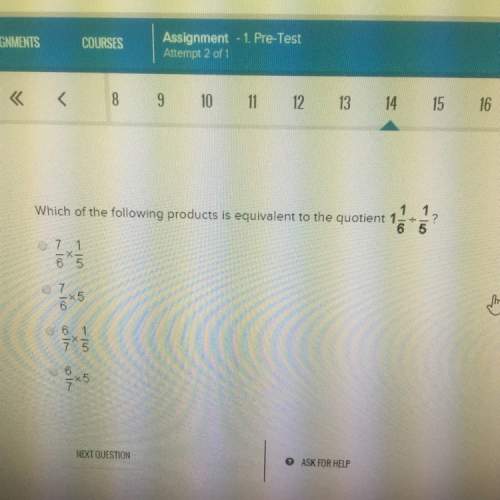
Mathematics, 13.07.2019 09:30 Kurlyash
In the table below are the results of rolling a number cube 400 times. number 1 2 3 4 5 6 frequency 35 211 32 41 38 43 a. based on the observed frequencies, calculate the relative frequency for each number. b. based on your results in a, do the outcomes for rolling the number cube appear to be equally likely? explain your answer using complete sentences. c. if the outcomes do appear to be equally likely, why are the observed frequencies different for each number? if the outcomes do not appear to be equally likely, identify a possible reason for this result.

Answers: 1


Another question on Mathematics

Mathematics, 21.06.2019 16:00
In the diagram, the ratio of ab to ae is (1/2) . what is the ratio of the length of to the length of ?
Answers: 3

Mathematics, 21.06.2019 19:30
Acar started driving from city a to city b, distance between which is 620 miles, at a rate of 60 mph. two hours later a truck left city b and started moving towards city a at a rate of 40 mph. how many hours after the truck's departure will the two meet?
Answers: 1

Mathematics, 21.06.2019 21:50
Free points also plz look my profile and answer really stuff
Answers: 2

Mathematics, 22.06.2019 00:00
The graph shows the amount of money noah earned based on the number of lawns he cut. which list shows the dependent quantities in the graph?
Answers: 3
You know the right answer?
In the table below are the results of rolling a number cube 400 times. number 1 2 3 4 5 6 frequency...
Questions



Mathematics, 08.04.2021 19:20




Mathematics, 08.04.2021 19:20

Mathematics, 08.04.2021 19:20

History, 08.04.2021 19:20

Mathematics, 08.04.2021 19:20

Mathematics, 08.04.2021 19:20


Mathematics, 08.04.2021 19:20




English, 08.04.2021 19:20


Business, 08.04.2021 19:20

Mathematics, 08.04.2021 19:20




